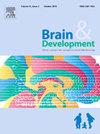Hand-arm bimanual intensive therapy versus modified constraint-induced movement therapy in children with hemiparetic cerebral palsy: A randomized controlled trial
IF 1.3
4区 医学
Q4 CLINICAL NEUROLOGY
引用次数: 0
Abstract
Introduction
Modified Constraint-Induced Movement Therapy (mCIMT) and Hand-Arm Bimanual Intensive Therapy (HABIT) are widely used for treating hemiparetic cerebral palsy (CP). Prior randomized controlled trials (RCTs) comparing these approaches yielded mixed outcomes.
Methods
This RCT evaluated the efficacy of 12 weeks of mCIMT versus HABIT in children aged 5–18 years with hemiparetic CP. Primary objective was to compare improvements in upper limb function (quality of upper extremity skills test [QUEST] total score) in both groups. Secondary objectives were to compare speed of upper limb movements (nine-hole peg board test), muscle strength (thumb strength and hand grip strength), quality of life (CPQoL), compliance to advised therapy in both groups, sustenance of improvement 4 weeks after stopping supervised treatment, and to describe and compare diffusion tensor imaging (DTI) and resting functional magnetic resonance imaging (fMRI) changes. Both groups received 2-h supervised sessions, 8 sessions over 4 weeks, followed by weekly sessions for 8 more weeks. Participants practiced 2 h daily at home, monitored by activity logs and videos when feasible.
Results
Each group had 30 participants. Changes in QUEST total scores after 12 weeks were comparable between HABIT and mCIMT (12.00 ± 7.52 vs. 11.35 ± 7.10, p = 0.48). Individual QUEST domain scores, nine-hole peg test times, thumb and grip strength, and CPQoL improvements were also similar between groups (p>0.05 for all). Both groups showed significant improvements across all outcomes at 12 weeks (p<0.05), maintained at 16 weeks. DTI revealed comparable changes in apparent diffusion co-efficient and fractional anisotropy values in the contralateral corticospinal tract (p = 0.63 and 0.71, respectively). fMRI showed increased activation in the contralateral sensorimotor cortex in both groups at 12 weeks.
Conclusion
HABIT and mCIMT demonstrate similar efficacy for upper limb function improvement in children with hemiparetic CP.
一项随机对照试验:偏瘫性脑瘫儿童的手扶强化治疗与改良的约束诱导运动治疗
改良约束诱导运动疗法(mCIMT)和手-臂-双-手强化疗法(HABIT)被广泛应用于治疗偏瘫性脑瘫(CP)。先前的随机对照试验(rct)比较这些方法产生了不同的结果。方法本随机对照试验评估了12周mCIMT和HABIT治疗5-18岁偏瘫性CP患儿的疗效。主要目的是比较两组患者上肢功能(上肢技能测试质量[QUEST]总分)的改善情况。次要目的是比较两组患者上肢运动速度(九孔钉板测试)、肌肉力量(拇指力量和手握力)、生活质量(CPQoL)、建议治疗依从性、停止监督治疗4周后改善的维持情况,并描述和比较弥散张量成像(DTI)和静息功能磁共振成像(fMRI)的变化。两组都接受2小时的监督训练,4周内进行8次训练,然后每周进行8周。参与者每天在家练习2小时,可行时通过活动日志和视频进行监控。结果每组30人。12周后QUEST总分的变化在HABIT和mCIMT之间具有可比性(12.00±7.52 vs 11.35±7.10,p = 0.48)。个体QUEST域得分、九孔钉测试次数、拇指和握力以及CPQoL的改善在两组之间也相似(p>0.05)。两组在12周时的所有结果均有显著改善(p < 0.05),并在16周时保持不变。DTI显示了对侧皮质脊髓束表观扩散系数和分数各向异性值的变化(p分别= 0.63和0.71)。fMRI显示两组在12周时对侧感觉运动皮层的激活增加。结论habit与mCIMT对改善偏瘫性CP患儿上肢功能的疗效相近。
本文章由计算机程序翻译,如有差异,请以英文原文为准。
求助全文
约1分钟内获得全文
求助全文
来源期刊

Brain & Development
医学-临床神经学
CiteScore
3.60
自引率
0.00%
发文量
153
审稿时长
50 days
期刊介绍:
Brain and Development (ISSN 0387-7604) is the Official Journal of the Japanese Society of Child Neurology, and is aimed to promote clinical child neurology and developmental neuroscience.
The journal is devoted to publishing Review Articles, Full Length Original Papers, Case Reports and Letters to the Editor in the field of Child Neurology and related sciences. Proceedings of meetings, and professional announcements will be published at the Editor''s discretion. Letters concerning articles published in Brain and Development and other relevant issues are also welcome.
 求助内容:
求助内容: 应助结果提醒方式:
应助结果提醒方式:


